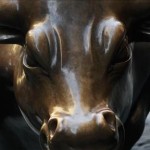To beat the stock market, buy quality – Brett Arends's ROI …

By Brett Arends
You can beat the market over time through “smart timing” and by investing in value stocks. And there is another way that may be even easier.
Indeed it is so easy it seems too good to be true.
Wall Street not so sure about mom-and-pop
Mom-and-pop investors are returning to stocks, but their renewed optimism is considered by many professionals to be a warning sign. Alexandra Scaggs reports on MoneyBeat. Photo: Getty Images.
New research has found that you could have beaten the market over many years simply by investing in the highest-quality, strongest, safest companies.
Not only did they produce higher returns and lower risk, they actually did best in times of market turmoil. In other words, they offered you something close to a free insurance policy against meltdowns like 2008.
“Quality,” observed Jeremy Grantham, legendary co-founder of Boston fund firm GMO, “has outperformed forever.” GMO’s own data, tracking “high quality” companies, finds that they have outperformed the Standard & Poor’s 500-stock index by a cumulative 50% since 1965. Furthermore, he says, Standard & Poor’s itself has tracked its own index of quality companies, the “High Grade Index,” since 1925 and it has “handsomely outperformed” the rest of the market over the entire time—especially during periods such as the Great Depression.
Also see: Take fewer risks for greater rewards
High-quality stocks have produced superior returns with far lower risk, Grantham notes. They are, in other words, a “free lunch” for investors. (Grantham, “Playing With Fire,” April 2010, at www.gmo.com. Registration required.)
Gunnar Pippel / Shutterstock.com
“Quality” isn’t the same as “value.” Quality stocks are often more expensive in relation to their net assets or earnings than other stocks. “Quality” usually refers to companies that are highly profitable, which have strong balance sheets, stable earnings, respectable growth, and good cash flow. They have excellent credit ratings. They typically have very strong brands or patents or other “defensive moats” that allow them to fend off competitors without slashing prices. GMO’s list of “high quality” U.S. companies include the blue-chip names you’d expect—such as old dependables like Chevron
/quotes/zigman/289939/delayed/quotes/nls/cvx CVX
-0.89%
, Wal-Mart
/quotes/zigman/245476/delayed/quotes/nls/wmt WMT
-0.38%
, Johnson & Johnson
/quotes/zigman/230812/delayed/quotes/nls/jnj JNJ
-0.77%
, McDonald’s
/quotes/zigman/233369/delayed/quotes/nls/mcd MCD
+0.59%
, and Procter & Gamble
/quotes/zigman/238894/delayed/quotes/nls/pg PG
+0.66%
, along with newer tech names like Apple
/quotes/zigman/68270/delayed/quotes/nls/aapl AAPL
+0.19%
/quotes/zigman/93888/delayed/quotes/nls/goog GOOG
+0.12%
and Microsoft
/quotes/zigman/20493/delayed/quotes/nls/msft MSFT
-0.61%
.
Over time, a portfolio of high-quality names has beaten the market—even though the stocks have typically been more expensive than the overall market—and offered lower risk.
This finding was supported by research published recently by Cliff Asness and Andrea Frazzini at AQR Capital and Lasse Pederson of New York University. They looked at the performance of nearly 40,000 stocks in 24 countries, including the U.S., since 1951. They sorted out the “quality” companies using four measures—high profitability (measured by returns on assets), high earnings growth (measured by growth over the previous five years), safety (measured in terms of low stock volatility, low leverage, stable earnings, and high credit ratings), and payouts (measured as the percentage of earnings paid to investors as dividends or through share buybacks).
Also see: You really can time the stock market
Their conclusions were threefold. The first was that high-quality stocks tended to trade at higher prices, in relation to assets and earnings, than lower-quality ones. In other words, the market had correctly identified higher-quality companies, and paid a premium for them. However, their second point was that the market didn’t pay enough of a premium for these companies. Even though they were more expensive, their stocks still outperformed the market over time because they did even better than the optimistic market had expected. And, thirdly, they found that quality persisted—that high-quality companies tended, in the main, to stay high quality.
•
Breaking-news alerts: Get free email alerts the instant news breaks
/conga/story/misc/alerts_sixwide.html239164
Over time, says NYU’s Pederson, “quality” tended to beat the overall market by about three percentage points a year, with substantially lower volatility. That is a huge gain over time.
What this means is that you could have beaten the market simply by putting together a broad portfolio of top-quality companies and then pretty much leaving them alone, with minimal interference. Furthermore, such stocks tended to do best at times of stress—so not only did you not have to worry about them, you could probably have owned more of them, and fewer bonds, because they would have fallen by much less in times of crisis.
/quotes/zigman/289939/delayed/quotes/nls/cvx
Add to portfolio
CVX
Chevron Corp.
US
: U.S.: NYSE
$
120.00
-1.08
-0.89%
Volume: 6.05M
Nov. 12, 2013 4:00p
P/E Ratio
9.75
Dividend Yield
3.33%
Market Cap
$232.86 billion
Rev. per Employee
$3.59M
/quotes/zigman/245476/delayed/quotes/nls/wmt
Add to portfolio
WMT
Wal-Mart Stores Inc.
US
: U.S.: NYSE
$
78.71
-0.30
-0.38%
Volume: 5.24M
Nov. 12, 2013 4:02p
P/E Ratio
15.28
Dividend Yield
2.39%
Market Cap
$256.31 billion
Rev. per Employee
$214,991
/quotes/zigman/230812/delayed/quotes/nls/jnj
Add to portfolio
JNJ
Johnson & Johnson
US
: U.S.: NYSE
$
93.56
-0.73
-0.77%
Volume: 7.45M
Nov. 12, 2013 4:01p
P/E Ratio
20.34
Dividend Yield
2.82%
Market Cap
$213.14 billion
Rev. per Employee
$570,178
/quotes/zigman/233369/delayed/quotes/nls/mcd
Add to portfolio
MCD
McDonald’s Corp.
US
: U.S.: NYSE
$
97.66
+0.57
+0.59%
Volume: 3.83M
Nov. 12, 2013 4:00p
P/E Ratio
17.50
Dividend Yield
3.32%
Market Cap
$96.61 billion
Rev. per Employee
$63,556
/quotes/zigman/238894/delayed/quotes/nls/pg
Add to portfolio
PG
Procter & Gamble Co.
US
: U.S.: NYSE
$
82.80
+0.54
+0.66%
Volume: 8.19M
Nov. 12, 2013 4:00p
P/E Ratio
20.05
Dividend Yield
2.91%
Market Cap
$223.60 billion
Rev. per Employee
$699,446
/quotes/zigman/68270/delayed/quotes/nls/aapl
Add to portfolio
AAPL
Apple Inc.
US
: U.S.: Nasdaq
$
520.01
+0.96
+0.19%
Volume: 7.08M
Nov. 12, 2013 4:00p
P/E Ratio
13.03
Dividend Yield
2.35%
Market Cap
$467.01 billion
Rev. per Employee
$2.13M
/quotes/zigman/93888/delayed/quotes/nls/goog
Add to portfolio
GOOG
Google Inc. Cl A
US
: U.S.: Nasdaq
$
1,011.78
+1.19
+0.12%
Volume: 1.20M
Nov. 12, 2013 4:00p
P/E Ratio
28.69
Dividend Yield
N/A
Market Cap
$337.63 billion
Rev. per Employee
$1.06M
/quotes/zigman/20493/delayed/quotes/nls/msft
Add to portfolio
MSFT
Microsoft Corp.
US
: U.S.: Nasdaq
$
37.36
-0.23
-0.61%
Volume: 29.72M
Nov. 12, 2013 4:00p
P/E Ratio
13.84
Dividend Yield
3.00%
Market Cap
$313.80 billion
Rev. per Employee
$810,010
Brett Arends is a MarketWatch columnist. Follow him on Twitter @BrettArends.
Visit site:
To beat the stock market, buy quality – Brett Arends's ROI …
See which stocks are being affected by Social Media


